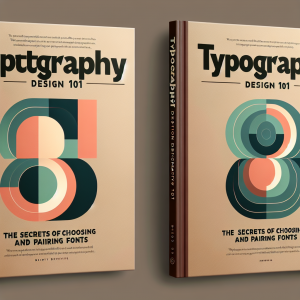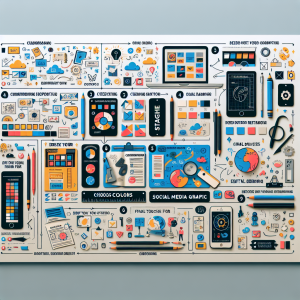

IntroductionTypography is an art form that focuses on the design of letterforms and textual layouts. It plays an integral role in graphic design, affecting the look, feel, and flow of communication. This article will guide you through the process of choosing and pairing fonts that will enhance your design project.
Understanding the Importance and Types of FontsUnderstanding typography is crucial due to its impact on readability, legibility, and user experience. Fonts are classified into various types: Serif, Sans Serif, Script, Monospace, and Display. Each type has a distinct character and personality, usually used in specific contexts based on its readability and aesthetic appeal.

Choosing the Right FontWhen it comes to choosing a font, one must consider a range of factors. These include the project’s tone, the audience’s demographics, the platform, the message conveyed and the overall brand identity. For instance, corporate brochures may require Serif fonts for their formal, professional feel, while social media posts may be more apt for Sans Serif due to its modern, clean look.
Mastering the Art of Pairing FontsPairing fonts is complicated – it involves a delicate balance between contrast and harmony. Simultaneously, the chosen pair should complement each other and enhance the content’s comprehensibility. Here are a few strategies to help: use fonts from the same family; combine Serif and Sans Serif; ensure one font is dominant, the other subordinate.

Typography Rules and ConsiderationsIn typography, several rules and considerations ensure efficiency and effectiveness. Notable ones include maintaining sufficient white space, using appropriate font size and line spacing, aligning text effectively, and being consistent with font usage. Attention should also be paid to color contrast and hierarchy to facilitate easy reading and a logical flow of information.
ConclusionTypography, particularly choosing and pairing fonts, can be complex, needing a good understanding of design principles and the project’s context. The choices made can significantly influence the overall visual impact and content comprehensibility. Hence, mastering fonts not only requires a designer’s eye and creativity; it requires careful, considered decisions.







